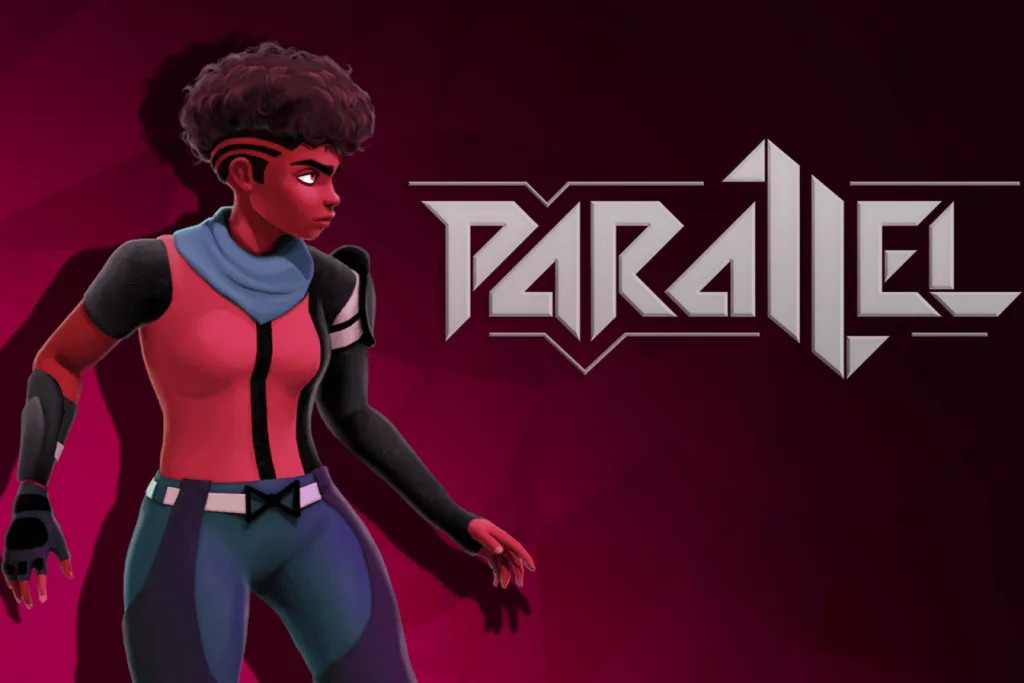5 Tips on Writing: With Game Writer Bonnie Harris-Lowe
Hi, I’m Bonnie, a game writer from South Carolina. My background includes personal writing, mainly in short stories, and seven years of education in screenwriting and interactive media writing.
I’ve published an academic paper on representation in games and how it impacts marginalized people in the gaming industry and community. Additionally, I run a personal blog about games as a hobby.
I’m currently developing a branching dating sim independently and have written a children’s book, which I’m seeking to publish.

The Art of Engaging Hooks in Game Writing
Creating intrigue quickly is essential as a game writer and can be achieved in various ways. These include:
- Starting amidst action, like Uncharted 2’s memorable train scene.
- Alluding to the mood or setting through art and sound, as audiovisual mediums often do before the story starts.
- Introducing a character and highlighting something vital about them. An example is Sunset’s opening, where the protagonist, a maid with an engineering degree, expresses her discontent.
- Using unique writing styles or wording, like Tolkien’s “eleventy-first” in The Fellowship of the Ring.
In written forms, how you format can also spark intrigue. “Get a Life, Chloe Brown” begins with the line “Once upon a time, Chloe Brown died.” This line alone raises questions about Chloe Brown and her death.
This standalone line compels the reader to keep reading for answers. Level design uses a similar tactic, guiding the player’s gaze with lighting and staging.
The best approach for introducing your work depends on the medium, genre, and the emotions you aim to evoke. Whatever method you choose as a game writer, ensure it encourages the audience to ask questions, pulling them deeper into your world for answers.
How Game Writers Craft Compelling Plots
When you have a concept, try writing a snippet of your story before outlining. This approach is beneficial as it helps you assess if the concept truly resonates with you and is worth pursuing. It also simplifies the planning process.
Starting with a bit of writing gives you a feel for the characters and the world you’re creating. You can gauge what these elements contribute to your story. If the scene you write works well, you can incorporate it into your outline and build your story around it.
If the scene isn’t quite right, it helps in refining your direction. Without this step, you might find yourself stuck in the planning phase. Having a written piece makes your idea more tangible and can break the paralysis of planning.
Although outlining is important, treat it as a dynamic tool. Continuously add notes, changes, and new ideas as your story evolves.
Mastering World-Building in Games Writing
Small details can significantly enhance a story. You don’t need to delve into every aspect of your world, but adding specific details can bring character to the environment, culture, or moment in your narrative, making it feel more real and engaging.
Worldbuilding is a common challenge among game writers. To address this, experimenting with familiar settings can be beneficial. For example, writing about Christmas in a family home, a world you know intimately, can bring out unique and authentic details.
Such an approach often results in stronger, more relatable pieces, as personal experiences enrich the narrative.
This technique is effective in various genres, from modern slice-of-life to fantasy worlds. By infusing your writing with real, quirky details from familiar settings, you can create more vivid, compelling worlds.
Character Development Secrets
Let your characters reveal themselves to you. Using character questionnaires at the start can be helpful to understand them better. However, it’s crucial to trust your intuition about their desires and needs as their stories unfold.
It’s common to think you know a character fully, only to find they don’t feel right when you begin writing. You might need to write a scene several times, experimenting until you find the version that truly captures the character’s authentic voice.
Be open to changing your initial perceptions of a character to better suit their development and fit the world you’re creating. You’ll know you’re on the right path when it feels like the characters are guiding you through the story, rather than you pushing them along a pre-determined path.
Making Choices Matter in Game Writing
My view might be unconventional, but I believe narrative choices in games don’t need to drastically impact the story to be significant.
Instead, these choices should reveal aspects of the characters or the situation, even if the outcomes don’t change.
For instance, in Dragon Age: Inquisition, I chose more humorous dialogue options. While these didn’t alter the story, they helped me develop a charmingly quirky personality for my character.
Years later, I still fondly remember her as one of my favorites. Though she began as a blank slate, my choices gave her depth and character.
Bonie's Game Writing Experience
I wrote for “Arc of Iris,” a Greek myth retelling, featured at the 2019 Indie Bits festival. Recently, I contributed as a game writer in my first game jam, creating a game about reviving a climate-ravaged world.
I was also a narrative designer for an unreleased project at Wildseed games, my first industry job.
At Wildseed, I developed frameworks for integrating narrative into gameplay, created characters, and wrote branching dialogues and conditional barks. My latest game, “Project Parallel,” releases this month!
I developed “Project Parallel” as a grad student from 2018 to 2020 for my thesis. The first year focused on iterating the story, developing the world and characters, and solidifying the plot.
COVID-19 hit during my final grad school semester, affecting my team and delaying the game’s release.
This year, I collaborated with talented individuals to fix bugs and add final touches. I’m thrilled to finally share it! “Project Parallel” will be free on Steam and itch.io.
Dual Expertise: On Writing and Narrative Design
In game writing, my focus is on building meaningful character relationships. I’ve been fascinated by how and why people connect in certain ways. This theme has permeated my work since childhood.
I initially wrote romantic fiction but have since explored complex family dynamics to better understand my own experiences.
In narrative design, my strength lies in aligning narrative elements with character actions. My experience in systems and level design keeps me aware of what players see and can do at any moment, and I aim to complement this with the narrative.
For example, in “Project Parallel,” I sometimes limited player actions to enhance narrative moments or control pacing. However, my current focus is allowing narratives to adapt to player actions rather than vice versa.
At Wildseed, I designed systems that interacted to let stories emerge from player actions. Whether it’s a linear or emergent narrative, I’m passionate about ensuring that the story and gameplay mutually reinforce each other.
Favorite Story and Its Impact
My favorite “Bob’s Burgers” episode is “The Horse Rider-er” (Season 6, Episode 17), focusing on Tina at horse camp. Tina stands out in the sitcom world, where teenage girls are often the target of jokes and sometimes disliked by their families.
Tina, portrayed as “weird” or rather authentically as a 13-year-old girl, receives love and support from her family, unlike in traditional sitcoms.
“The Horse Rider-er” highlights this aspect of Tina’s character. The episode culminates with her “riding” an imaginary horse, celebrated not as a cringe moment but as a triumph.
Everyone, including her family, frenemies, and camp counselor, admires Tina for her confidence and awkwardness. This episode never fails to move me to tears.
An Interactive Audio Story in the World of Zelda
https://twist-tales.com/games/I’m drawn to the idea of an interactive audio story about the Gerudo from the Zelda series, whose portrayal has typically been superficial.
Seen mainly as the origin of the main villain in “Breath of the Wild” and “Tears of the Kingdom,” they are depicted as a society obsessed with marriage, which feels voyeuristic and off-putting.
There are compelling questions about the Gerudo’s role. How did Hyrule reconcile with them after Ganondorf’s misdeeds? Did they try to atone, or did they shirk responsibility?
“Breath of the Wild” and “Tears of the Kingdom” show Gerudo adults primarily as husband-seekers or warriors, presenting a dilemma that impacts young Gerudo girls and underpins their exclusion of men. What risks would including men pose to their society?
If the Gerudo still crown a male born every 100 years as king, this raises questions about the female leader’s position at his birth. The Gerudo’s complex society offers substantial narrative potential for deepening Zelda’s lore.





